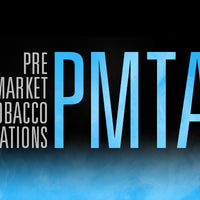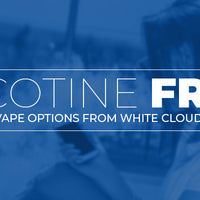In Part 1, we took a look at the biggest vape news during the first quarter of 2016, including positive news out of the UK in early January and the passing of the Cole/Bishop Amendment in the US during the Agricultural and Rural Development Appropriations bill hearing in mid-April. Now we’ll take a look at what came next for the vaping industry.
A Review of the Vaping Industry in 2016: Part 2
From federal regulations and state-level crackdowns to the world premiere of the first vaping documentary, the vaping industry had its highs and lows during the summer of 2016. One of the biggest highs was the world premiere of A Billion Lives, a documentary about vaping and government involvement in tobacco harm reduction around the world, and one of the biggest lows was the official release of the FDA’s Deeming Regulations for vapor products in early May.
Vape News from May 2016
Despite the positive news making headlines the month before, May 2016 was a very bleak month for the vaping industry in the US. On May 5th, the FDA announced the early release of its long-awaited Deeming Regulations for vapor products. The 499-page document sent the vaping industry into an uproar, with tobacco harm reduction expert Dr. Michael Siegel claiming the regulations to be “a disaster for public health”.
It has been projected that 99% of the vaping industry could be shut down by 2018 due to the predicate date of February 15, 2007 remaining intact. As a result, all vape companies are required to submit the extensive and costly Pre-Market Tobacco Application (PMTA) for every product introduced to the market after the set predicate date, with the deadline for approval set to August 2018. Additionally, innovation in the industry has essentially been stifled as the regulations prohibit new vaping products from entering the market without an approved PMTA.
Related: A Guide to Understanding the FDA’s Vaping Regulations
On May 11, Just one day after the FDA’s Deeming Regulations were published in the US Federal Register, the long-awaited vaping documentary titled A Billion Lives made its world premiere at the Doc Edge Film Festival in New Zealand. The documentary was created by Director Aaron Biebert and Attention New Era Media, a film crew that traveled the world to reveal government failure in accepting what renowned researchers and tobacco harm reduction experts have been calling “a public health miracle.”
At the time of the premiere, the sale of e-cigarette products containing nicotine or claiming to help people quit smoking were illegal within the country. Shortly after the film’s debut, the New Zealand Minister of Health issued a proposal to lift the ban on the sale of vapor products within the country to instead be used as an option for tobacco harm reduction.
Vape News from June 2016
In June, the “teen vaping leads to smoking” theory came back with a vengeance after a survey of about 300 high school students was conducted by a researcher with the University of Southern California’s Tobacco Center of Regulatory Science. The survey quickly drew criticism based on the fact that not only was the sample was much too small to conclude that all teens who experiment with vaping will take up smoking, but also because the steady decline is youth smoking rates completely contradicts the theory.
Critics also pointed out that the lead author of the survey misrepresented the survey methods and its findings. This wasn’t the first (and probably won’t be the last) study to manipulate study methods and findings to support the vaping gateway theory. In fact, there have been so many that now there is even a guide entitled “How to not be duped by gateway effect claims”, written by tobacco harm reduction expert Clive Bates.
Vape News from July 2016
July 2016 brought on more state-level crackdowns on the vaping industry when the state of Utah implemented a complete ban on online orders for vapor products. The law was written and proposed by Paul Ray, a known anti-vaping rep who refers to the vaping industry as the “scumbag industry”. Ray has been accused of pulling a bait and switch tactic for adding hidden language within HB 415, which was never discussed or debated and didn’t clearly translate an all-out ban against ordering vapor products online. The Utah Smoke-Free Association has been working to change the law through legislation and has set up the UTFSA legal fund for vapors and vendors who would like to contribute.
Vape News from August 2016
For the vaping industry in the US, August 8, 2016 because known as “D Day” as in the FDA’s Deeming Regulations officially took effect. This is the day the vaping industry officially came to a halt when it comes to innovation. Vaping products are now categorized and regulated as tobacco products and each new product must go through the extensive and costly Pre-Market Tobacco Application (PMTA) process to obtain FDA approval in order to enter the market after August 8, 2016. All other products that were on the market prior to this date but after the predicate date of February 15, 2007 must also go through the PMTA process and obtain FDA approval to remain on the market after August 8, 2018.
All 499 pages of the FDA’s Deeming Regulations, which are full of confusing language and several gray areas, were published in the US Federal Register. For more information, check out our guide to understanding FDA vaping regulations.
How Did 2016 End for the Vaping Industry?
In Part 3, we’ll take a look at the biggest news in the vaping industry during the last quarter of 2016, which includes outrageous tax hikes and more strict regulations proposed and/or implemented by local governments in the US.






